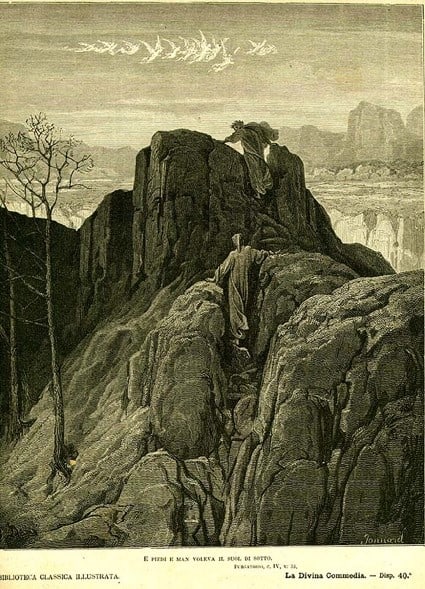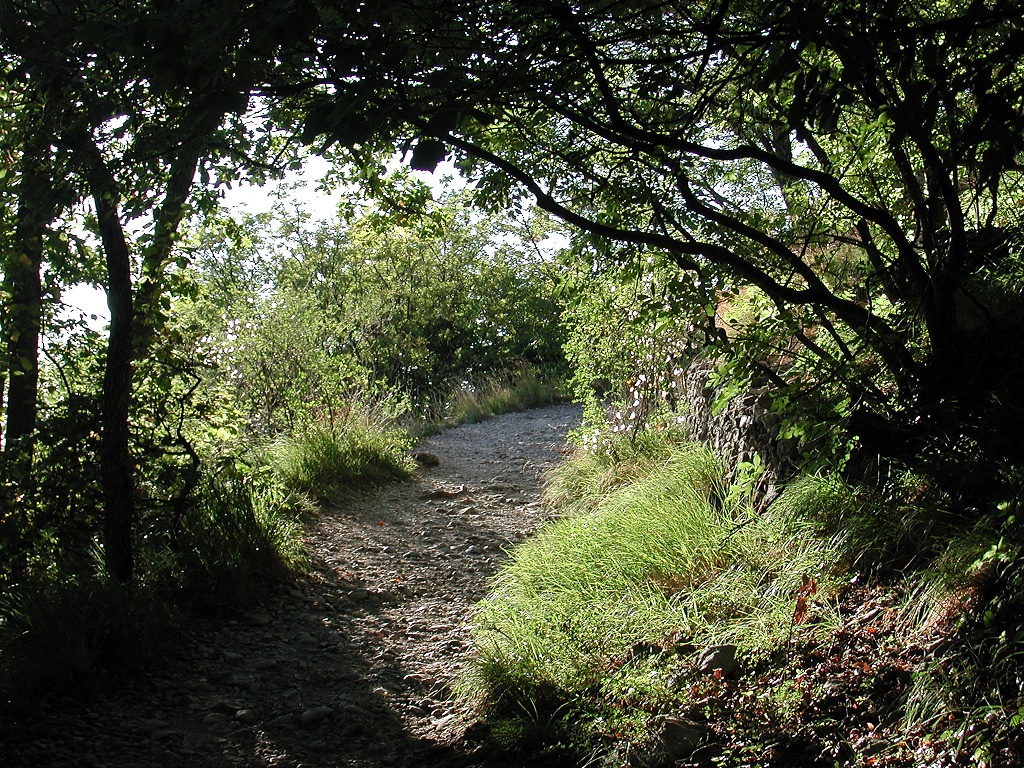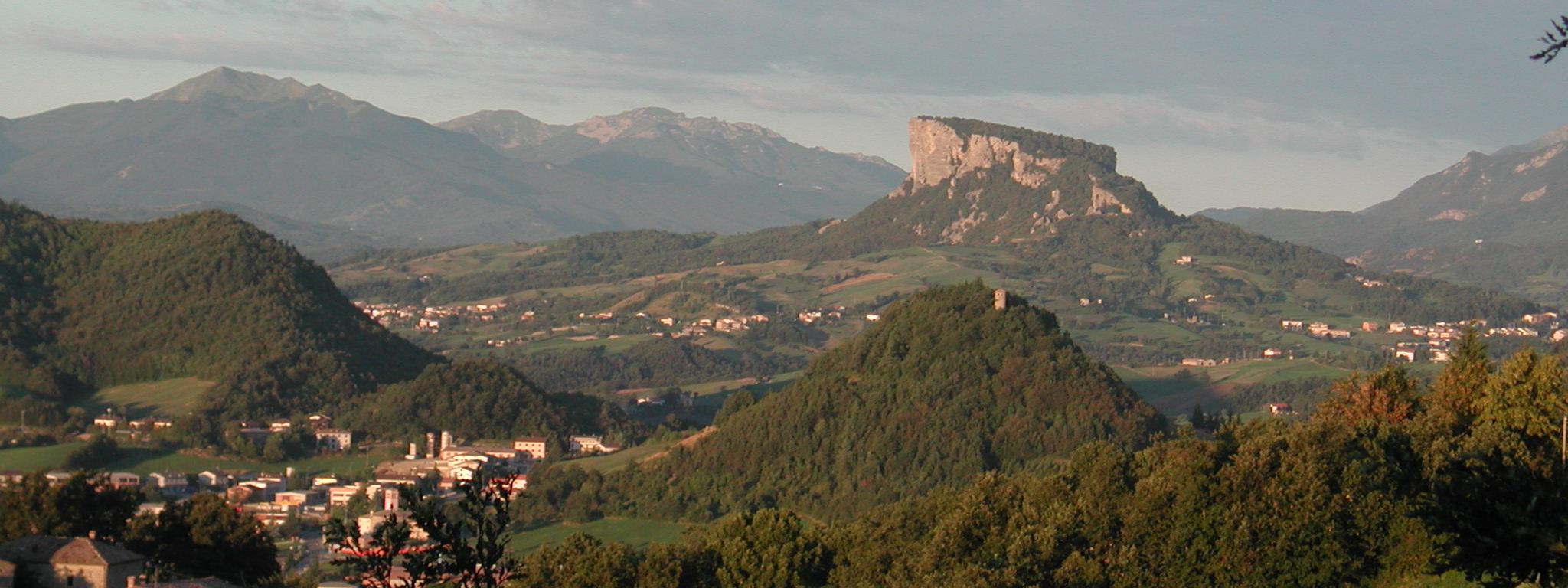It could be the isolated plateau known as la Bismantova stone what inspired Dante Algieri to describe the Monte del Purgatorio. Fourth canto of the second canticle of the Divine Comedy. " Vassi in Sanleo and descended in Noli mounted on Bismantova and n'Cacume conesso the feet; but here it is believed that om flights…. ". The Pietra di Bismantova is an isolated and somewhat mysterious mountain, precisely because of its position that sees it stand out alone among the gentle hills of the Tuscan-Emilian Apennines. It would have been known to the Supreme Poet because he would have visited him personally in 1306 passing through these parts while he was traveling from Padua to Lunigiana.

And its steep walls, the large grassy plateau that is on its summit, would have led Dante to see a sacred mountain in the Stone. Steep cliff towards the Garden of Eden plateau, also taken by the great illustrator of the Divine Comedy Gustav Dore for his images of Dante's work. But not only Dante.

Something magical and mysterious hovers around this isolated rocky spur from which you can enjoy a beautiful view. Its shape may be reminiscent of a large Celtic altar. In fact, ancient testimonies tell us that the Celts passed through these parts, but also the Etruscans, the Romans, the Byzantines. The Necropolis of Campo Pianelli (1617th-XNUMXth century BC) is located right on its slopes and represents the most important archaeological area of the Reggiano Apennines. In XNUMX at the foot of the cliff the Benedictine monks built a hermitage, which today has become the Marian Sanctuary. Inside there are important XNUMXth century frescoes including the Madonna di Bismantova. Today, as in the past, the hermitage is an object of worship and veneration, since very ancient times it has been visited by pilgrims who reached it - often barefoot - along a path. And which then proceeded up to the summit of the Pietra from where, on clear days, it ranges from the Alps to the Apennines.
Between mysteries and legends, the Pietra di Bismantova in popular imagination
Il the village of Castelnovo ne 'Monti, at the foot of the Pietra di Bismantova and capital of the Reggiano Apennines, is a small town, just over forty kilometers south of Reggio Emilia, whose origins date back to the XNUMXth century. Closed between three hills, Monte Castello, Monte Forco and Monte Bagnolo, it has a bond with the Pietra di Bismantova made up of attachment to the place but also of popular legends, magical stories and supernatural events. It is said that in ancient times the cliff was a place of magical encounters, house of the devil who would even leave his footprints on the rock. It tells of particular episodes that coincided with the phases of the moon, of strange and inexplicable spheres of light that would have been seen right in the vicinity of the Bismantova stone. All episodes that certainly fueled the popular imagination.
Mountaineering and walking, the cliff seen with today's eyes
Imposing and majestic, the cliff has been the subject since the beginning of the century of mountaineering climbs and, with its 1041 meters of altitude, it is considered the most important climbing wall in all of Emilia Romagna. But it is also a destination for walks and excursions that start from Castelnovo ne 'Monti. For example, the circular route (just over five kilometers) that first leads to the top of the cliff and then descends on the opposite side, among the green meadows that surround it. Imposing, strong, attractive, this is how the inhabitants of Castelnovo ne 'Monti feel “their” Stone, a place to admire, experience, contemplate in its particular beauty. A "family thing", as those who live in these parts say.

Un There is also a pinch of mystery in the origin of its very particular name, Bismantova. It could be Etruscan, linked to its role as a sacred mountain: from Mon, carved stone, e tae, altar for sacrifices. But it could also be a reference, and here the origin of the name would be Celtic, to an ancient lunar cult, from screw, mistletoe, e men, moon. In relation, in this case, to the nocturnal mistletoe harvest typical of these ancient rituals. Or, more simply, Bismantova would derive from the fact that this ancient, particular, isolated, somewhat mysterious rocky spur is located halfway between Mantova and Lucca, as explained by the website of the National Park of the Tuscan-Emilian Apennines.
Photo source: Paolo da Reggio, CC BY-SA 3.0





